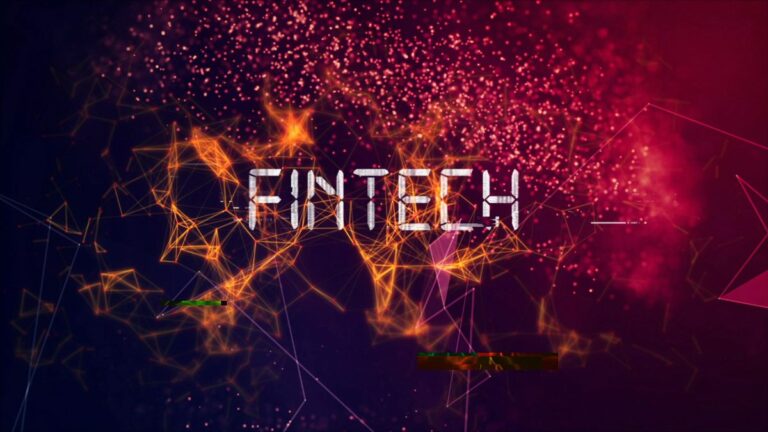Fintech Safety: Balancing Innovation and Risk in Financial Technology
The rapid evolution of financial technology (fintech) has transformed how we manage, invest, and interact with money. As innovative solutions emerge, questions about safety and security become increasingly critical for consumers and businesses alike.
The Digital Financial Landscape
Modern fintech platforms are reshaping traditional banking through groundbreaking technologies that promise convenience, speed, and accessibility. Mobile payment systems, blockchain applications, and artificial intelligence-driven financial services have created unprecedented opportunities for users worldwide.
Key Safety Challenges in Fintech
- Cybersecurity vulnerabilities
- Data privacy concerns
- Regulatory compliance complexities
- Potential technological disruptions
Technological Safeguards Revolutionizing Financial Protection
Advanced encryption technologies and multi-factor authentication systems have become critical defense mechanisms against potential security breaches. Machine learning algorithms now continuously monitor transactions, detecting suspicious activities in real-time and preventing fraudulent transactions before they can cause significant damage.
Risk Mitigation Strategies
Financial technology companies are investing heavily in robust security infrastructure. They implement comprehensive risk management frameworks that include:
- Advanced threat detection systems
- Regular security audits
- Continuous employee training
- Adaptive security protocols
Consumer Trust and Technological Transparency
Building consumer confidence remains paramount in the fintech ecosystem. Transparent communication about security measures and potential risks helps users understand the protective mechanisms embedded within digital financial platforms.
Data Protection Mechanisms
Cutting-edge fintech companies are implementing end-to-end encryption and zero-knowledge proof technologies that minimize data exposure while maintaining transactional integrity. These approaches ensure that sensitive financial information remains protected throughout digital interactions.
Regulatory Landscape and Compliance
Government regulations play a crucial role in establishing safety standards for financial technology platforms. Emerging frameworks like GDPR and specific financial technology guidelines help create standardized security protocols that protect consumer interests.
Global Security Standards
International collaboration among financial regulators is developing comprehensive guidelines that address cross-border technological challenges. These standards aim to create a unified approach to managing risks associated with digital financial services.
Emerging Technologies Enhancing Financial Security
Blockchain and distributed ledger technologies are providing unprecedented levels of transparency and security. Decentralized systems reduce single points of failure and create more resilient financial infrastructures that can withstand potential cyber threats.
Artificial Intelligence in Risk Management
Machine learning algorithms are revolutionizing risk assessment by analyzing complex patterns and predicting potential security vulnerabilities before they can be exploited. These intelligent systems provide proactive protection mechanisms that traditional security approaches cannot match.
Future Outlook
The fintech industry continues to balance innovation with robust security measures. As technological capabilities expand, so do the sophisticated methods for protecting digital financial ecosystems. Continuous investment in research, development, and security infrastructure will be crucial in maintaining user trust and technological advancement.
While challenges remain, the potential for creating more secure, efficient, and accessible financial services continues to drive technological innovation. Users and companies must remain vigilant, adaptable, and committed to maintaining the delicate balance between cutting-edge technology and comprehensive security protocols.
Cybersecurity Challenges in Modern Financial Platforms
In the rapidly evolving digital financial landscape, financial technology platforms face unprecedented security challenges that test the boundaries of technological innovation and risk management. Modern financial systems are under constant siege from sophisticated cyber threats that adapt and mutate with alarming speed and complexity.
Digital Vulnerability Landscape
Today’s financial platforms operate in an environment where cybercriminals continuously develop advanced techniques to breach security infrastructure. These digital predators exploit microscopic vulnerabilities in software, network protocols, and human interactions, transforming seemingly robust systems into potential entry points for malicious activities.
Emerging Threat Vectors
Financial platforms now confront multiple sophisticated threat vectors that challenge traditional security paradigms:
- Advanced persistent threats targeting transaction systems
- Ransomware attacks disrupting financial service continuity
- Social engineering schemes manipulating user credentials
- Machine learning-powered intrusion attempts
- Cross-platform authentication manipulation
Strategic Defense Mechanisms
Organizations are developing multi-layered defense strategies that integrate cutting-edge technological solutions with human-centric security approaches. These comprehensive frameworks leverage artificial intelligence, machine learning algorithms, and real-time monitoring systems to detect and neutralize potential security breaches instantaneously.
Authentication Revolution
Biometric authentication technologies are transforming traditional security protocols. Sophisticated systems now incorporate:
- Facial recognition technologies
- Fingerprint scanning mechanisms
- Voice pattern authentication
- Behavioral biometric analysis
Risk Management Frameworks
Financial institutions are implementing dynamic risk assessment models that continuously evaluate potential vulnerabilities. These frameworks analyze historical data, current threat landscapes, and predictive intelligence to create adaptive security protocols.
Predictive Threat Intelligence
Advanced predictive modeling enables financial platforms to anticipate potential security breaches before they materialize. By analyzing complex data patterns and historical cyber attack trends, organizations can develop proactive defense mechanisms that stay ahead of potential threats.
Regulatory Compliance Challenges
Navigating the intricate landscape of cybersecurity regulations presents significant challenges for financial platforms. Global regulatory frameworks like GDPR, CCPA, and industry-specific compliance standards demand rigorous security implementations that balance technological innovation with stringent protection protocols.
Compliance Strategy
Successful cybersecurity strategies require:
- Continuous regulatory monitoring
- Comprehensive documentation practices
- Regular security audits
- Transparent reporting mechanisms
Human Factor Considerations
Despite technological advancements, human interaction remains a critical vulnerability in cybersecurity frameworks. Organizations must invest in comprehensive training programs that educate employees about potential risks, teaching them to recognize and respond to sophisticated phishing attempts and social engineering tactics.
Training Imperatives
Effective cybersecurity education should focus on:
- Real-world threat scenario simulations
- Interactive learning modules
- Continuous skill development
- Cultural awareness of digital risks
The intersection of technological innovation and cybersecurity represents a dynamic battlefield where financial platforms must continuously adapt, evolve, and anticipate emerging challenges. Success demands a holistic approach that integrates advanced technological solutions, strategic risk management, regulatory compliance, and comprehensive human-centric training programs.
User Protection Strategies in Digital Banking Ecosystems
In today’s rapidly evolving digital landscape, financial technology platforms are constantly reshaping how consumers interact with banking services. The critical challenge lies in creating robust protection mechanisms that safeguard user data and financial assets while maintaining seamless digital experiences.
Emerging Digital Security Paradigms
Modern digital banking ecosystems require multifaceted approaches to user protection. Advanced authentication technologies have become fundamental in preventing unauthorized access. Biometric verification, including facial recognition and fingerprint scanning, represents a sophisticated layer of security that goes beyond traditional password systems.
Key Protection Strategies
- Implementing advanced encryption protocols
- Utilizing machine learning for anomaly detection
- Developing real-time transaction monitoring systems
- Creating adaptive risk assessment frameworks
Technological Innovations in User Defense
Artificial intelligence has transformed user protection strategies by enabling predictive threat analysis. Banks now leverage sophisticated algorithms that can detect potentially fraudulent activities within milliseconds, significantly reducing the window of vulnerability for digital transactions.
Comprehensive Risk Management Framework
Financial institutions are developing comprehensive risk management strategies that integrate multiple defensive layers. These approaches combine behavioral analytics, network security protocols, and continuous user verification processes to create an integrated protection ecosystem.
Advanced Authentication Techniques
Multi-factor authentication has evolved beyond traditional two-step verification. Contemporary systems incorporate contextual authentication that considers factors like:
- Geographic location
- Device fingerprinting
- User behavior patterns
- Time of access
Regulatory Compliance and User Protection
Global financial regulators are increasingly mandating stringent digital security standards. Financial technology platforms must now demonstrate comprehensive user protection mechanisms that go beyond basic compliance requirements. This regulatory pressure drives continuous innovation in security technologies.
Data Privacy Considerations
Protecting personal financial information requires sophisticated data management strategies. Banks are investing heavily in anonymization techniques and secure data storage infrastructure to prevent potential breaches. Blockchain technology is emerging as a promising solution for creating immutable and transparent transaction records.
Cybersecurity Investment Trends
| Year | Investment (Billions) | Focus Area |
|---|---|---|
| 2020 | $12.6 | Network Security |
| 2021 | $17.3 | AI-Driven Protection |
| 2022 | $24.5 | Comprehensive Digital Defense |
User Education and Empowerment
Beyond technological solutions, financial institutions recognize the importance of user awareness. Comprehensive educational programs help customers understand potential digital risks and adopt proactive security practices. Interactive training modules and real-time threat notifications are becoming standard offerings.
Future of Digital Banking Security
The next generation of digital banking protection will likely integrate quantum computing, advanced machine learning, and predictive threat intelligence. Financial institutions are preparing for increasingly sophisticated cyber threats by developing adaptive and anticipatory security frameworks.
As digital banking continues to evolve, user protection remains a dynamic and critical priority. Financial technology platforms must remain agile, continuously updating their security strategies to address emerging technological challenges and protect user assets effectively.

Emerging Technological Safeguards in Financial Services
In the rapidly evolving landscape of financial technology, innovative safety mechanisms are transforming how institutions protect sensitive financial data and customer assets. Modern financial services are experiencing a revolutionary shift in cybersecurity approaches, leveraging cutting-edge technologies to create robust defense systems against increasingly sophisticated digital threats.
Advanced Threat Detection Strategies
Contemporary financial platforms are implementing artificial intelligence-powered threat detection systems that continuously monitor transaction patterns and user behaviors. These intelligent systems can instantly identify suspicious activities, flagging potential security breaches before they escalate. Machine learning algorithms analyze millions of data points in milliseconds, creating dynamic risk assessment models that adapt to emerging cyber threats.
Key Technological Safeguards
- Biometric Authentication Protocols
- Real-time Transaction Monitoring
- Encrypted Communication Channels
- Multi-factor Verification Systems
Blockchain Security Innovations
Blockchain technology has emerged as a game-changing security framework for financial services. By creating decentralized and immutable transaction records, blockchain eliminates traditional vulnerabilities associated with centralized database systems. Each transaction becomes transparently recorded across multiple network nodes, making unauthorized modifications virtually impossible.
Enhanced Data Protection Mechanisms
Financial institutions are now integrating advanced encryption techniques that go beyond conventional security measures. Quantum encryption methods are being developed to create unbreakable communication channels, ensuring that sensitive financial information remains completely protected from potential cyber intrusions.
Risk Management Through Predictive Analytics
Modern financial platforms utilize sophisticated predictive analytics to anticipate and mitigate potential security risks. These systems analyze historical data, current market trends, and emerging threat patterns to develop proactive security strategies. By understanding potential vulnerabilities before they become critical, institutions can implement preemptive protective measures.
Artificial Intelligence Integration
AI-driven risk assessment tools are revolutionizing how financial services approach security. These intelligent systems can process complex data sets, identifying subtle patterns that might indicate potential fraudulent activities. Machine learning algorithms continuously evolve, becoming more accurate and responsive with each analyzed transaction.
Customer-Centric Security Approaches
Financial technology is increasingly focusing on creating seamless security experiences that don’t compromise user convenience. Innovative authentication methods like behavioral biometrics analyze unique user interaction patterns, providing frictionless yet highly secure access mechanisms.
Zero-Trust Security Architecture
Contemporary financial platforms are adopting zero-trust security models, which assume no inherent trust within the network. Every access request, regardless of origin, undergoes rigorous verification processes. This approach significantly reduces potential breach points and ensures comprehensive protection across digital ecosystems.
Regulatory Compliance and Technology
Financial institutions are leveraging technological solutions to ensure stringent regulatory compliance. Automated compliance monitoring systems can instantly detect and report potential violations, helping organizations maintain legal and ethical standards while protecting customer interests.
Global Security Standards
International financial technology standards are continuously evolving to address emerging digital challenges. Collaborative efforts between technology experts, cybersecurity professionals, and regulatory bodies are creating comprehensive frameworks that set new benchmarks for digital financial security.
As financial technologies continue advancing, the intersection of innovation and security becomes increasingly sophisticated. Organizations that successfully integrate these cutting-edge technological safeguards will not only protect their assets but also build substantial trust with their customers in an ever-changing digital landscape.
Trust and Transparency: The Future of Secure Financial Technologies
In the rapidly evolving landscape of financial technology, the intersection of innovation and security has become a critical battleground for trust. Modern consumers are increasingly demanding more than just cutting-edge services – they want absolute assurance that their financial data remains protected.
Financial technologies are transforming how we interact with money, but this digital revolution comes with significant challenges. Cybercriminals are becoming more sophisticated, targeting vulnerabilities in digital financial platforms with unprecedented precision. This reality demands a multi-layered approach to security that goes beyond traditional protective measures.
The Emerging Paradigm of Financial Security
Emerging technologies are reshaping the security infrastructure of financial platforms. Artificial intelligence and machine learning now play pivotal roles in detecting potential fraud in real-time. These intelligent systems can analyze millions of transactions simultaneously, identifying suspicious patterns faster than human analysts ever could.
Key Security Innovations
- Biometric authentication technologies
- Advanced encryption protocols
- Blockchain-powered transaction verification
- Behavioral analysis algorithms
Blockchain technology has emerged as a game-changing solution for ensuring transaction transparency and security. By creating decentralized, immutable ledgers, financial institutions can provide unprecedented levels of trust. Each transaction becomes a permanent, verifiable record that cannot be altered or manipulated, significantly reducing the risk of fraudulent activities.
Consumer Expectations in Digital Finance
Today’s consumers are more digitally savvy and security-conscious than ever before. They expect seamless user experiences without compromising their personal financial information. This requires financial technology companies to develop intuitive platforms that balance sophisticated security measures with user-friendly interfaces.
Critical Security Considerations
- Real-time threat detection
- Transparent data handling practices
- Comprehensive user control mechanisms
- Continuous security updates
Regulatory frameworks are also evolving to address the complex security landscape. Governments worldwide are implementing stringent guidelines that mandate robust protective measures for digital financial platforms. These regulations compel organizations to invest heavily in cybersecurity infrastructure and maintain transparent operational practices.
Risk Mitigation Strategies
Successful financial technology companies are adopting proactive risk management approaches. This involves continuous monitoring, predictive threat analysis, and adaptive security protocols. By implementing multi-factor authentication and end-to-end encryption, these platforms create multiple layers of protection against potential breaches.
Machine learning algorithms have become instrumental in developing predictive security models. These sophisticated systems can analyze historical data, identify potential vulnerabilities, and develop preemptive defense mechanisms. The result is a dynamic security environment that continuously learns and adapts to emerging threats.
Advanced Protection Techniques
- Zero-trust security architecture
- Continuous authentication processes
- Advanced cryptographic techniques
- Comprehensive user behavior analysis
The future of financial technologies will be defined by their ability to create trust through transparency, innovation, and robust security measures. As digital platforms become more integrated into our daily financial interactions, the companies that prioritize user protection will ultimately succeed in this competitive landscape.
Consumers are no longer willing to compromise between convenience and security. They demand – and deserve – financial technologies that offer both seamless experiences and ironclad protection. The most successful fintech platforms will be those that can demonstrate an unwavering commitment to safeguarding user data while providing cutting-edge financial services.
Conclusion
The future of fintech safety hinges on a delicate balance between groundbreaking innovation and robust risk management. As financial technologies continue to evolve, the industry must prioritize user protection and technological resilience. The convergence of advanced cybersecurity measures, cutting-edge encryption technologies, and transparent operational practices will be crucial in building and maintaining user trust.
Financial institutions and technology providers must view safety not as a static concept, but as a dynamic, continuously adaptive strategy. The most successful fintech platforms will be those that can seamlessly integrate state-of-the-art security protocols while maintaining user-friendly experiences. This means investing in intelligent threat detection systems, blockchain-based authentication methods, and comprehensive user education programs.
Transparency will emerge as the critical differentiator in the coming years. Users are increasingly sophisticated and demand clear insights into how their financial data is protected. Companies that can demonstrate uncompromising commitment to security, while simultaneously driving technological innovation, will gain a significant competitive advantage.
The road ahead requires collaboration between technologists, cybersecurity experts, regulatory bodies, and financial service providers. By creating comprehensive ecosystems that prioritize user safety without stifling innovation, the fintech industry can transform potential risks into opportunities for growth and trust-building.
As digital financial landscapes become more complex, the ultimate goal remains unchanged: providing secure, efficient, and accessible financial services that empower users while protecting their most sensitive information. The future of fintech safety is not about eliminating risk entirely, but about managing and mitigating it with intelligence, transparency, and unwavering commitment to user protection.
Read Also Top Fintech Apps Of 2025: The Tools Millionaires Rely On
Was this helpful?




Leave Feedback